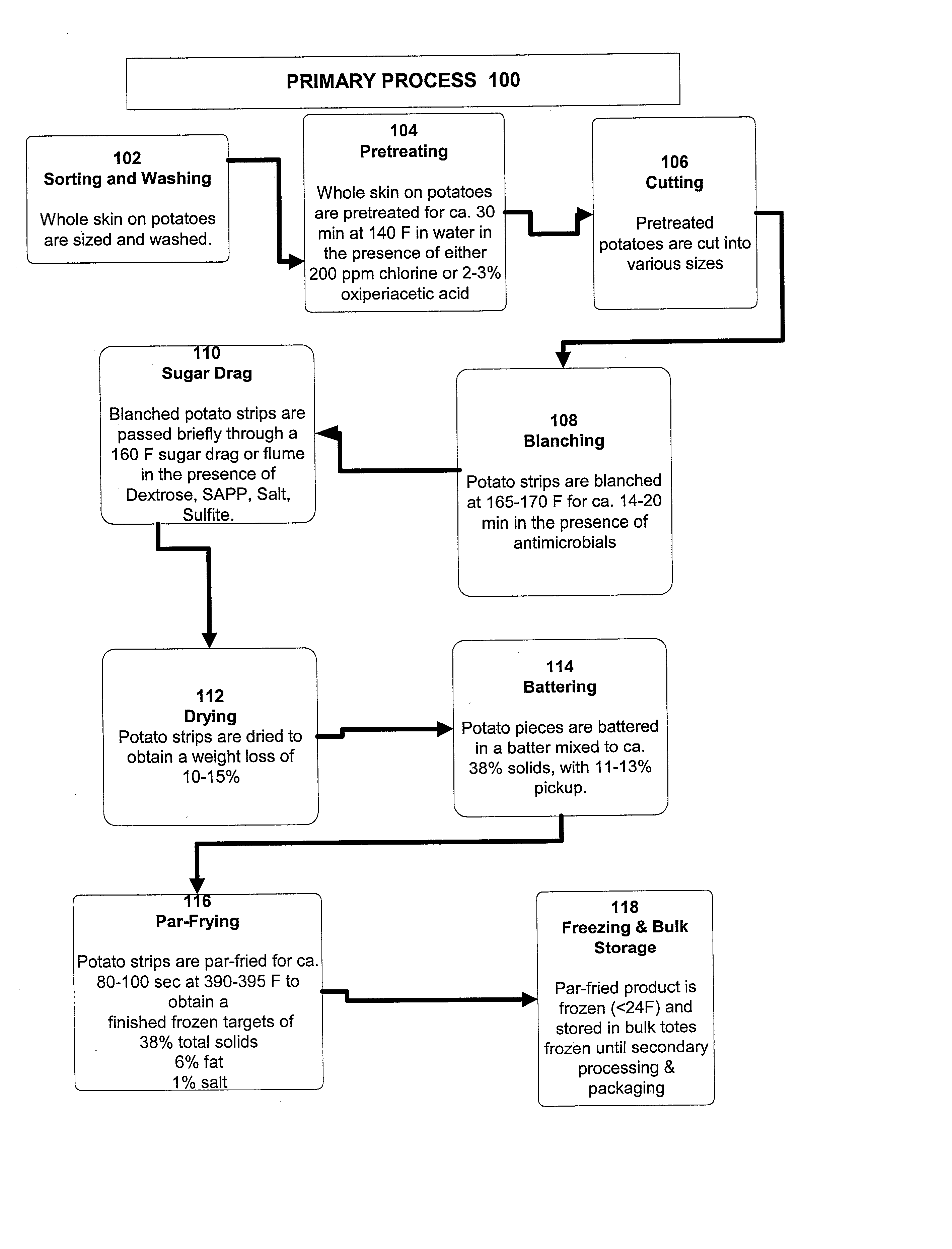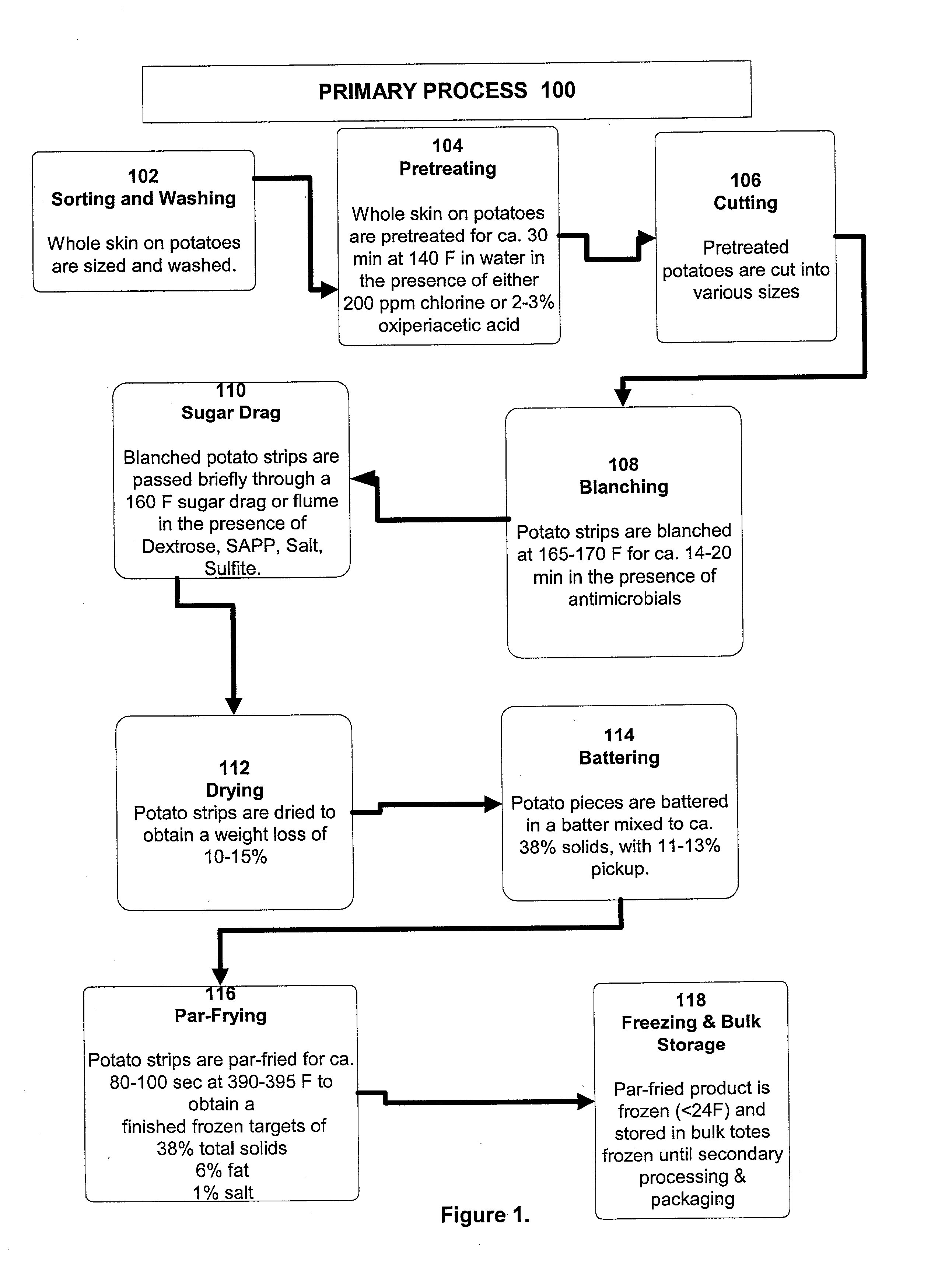Process for preparing french fried potatoes having an extended shelf life at refrigerated temperatures and a reduced reconstitution time
a technology of refrigerated temperature and reconstitution time, which is applied in the field of refrigerated potato product preparation with extended shelf life and reduced reconstitution time, can solve the problems of poor textural quality, product lack of flavor, and failure to meet the requirements of refrigerated potato product quality standards
- Summary
- Abstract
- Description
- Claims
- Application Information
AI Technical Summary
Problems solved by technology
Method used
Image
Examples
example 1
[0036] Whole, skin on Russet Burbank or Russet Ranger type potatoes were washed and pretreated (tempered) in water for 30 minutes at 140.degree. F. in the presence of 200 ppm chlorine. The pre-treated potatoes were then sliced into 3 / 8 inch (0.95 cm).times.3 / 8 inch (0.95 cm) straight cut strips and the slivers were removed mechanically. Potato strips were blanched for 15 min at 167.degree. F. (75.degree. C.) in the presence of 0.2% disodium pyrophosphate (SAPP), 1% sodium chloride, and 0.2% Sodium meta-bi-sulfite. After blanching the potatoes were passed through a hot water drag containing dextrose for 20 seconds at 160.degree. F. (71.1.degree. C.). The potato strips were then dried to achieve a moisture loss of about 10% to 12% prior to battering. The starch-based type batter was mixed to contain 38% total solids at 60.degree. F. (15.6.degree. C.) prior to application to the potato strips. After battering, the potato strips were passed under air knives to control uptake of the batt...
example ii
[0043] Potato strips were processed in the previously described primary processing manner as in Example 1 above. Following the primary processing, the frozen bulk packaged potato strips were transferred out of bulk containers and passed into a UV light exposure tunnel. The entry of the UV tunnel was external of a clean room wall while the exit end of the oven was inside the clean room (as previously described in Example 1). The frozen potato strips were exposed to UV light for about 3 minutes prior to freezing again using a liquid nitrogen cryogenic tunnel. After refreezing, the potato strips were aseptically weighed and packaged (as previously described in Example 1).
[0044] The microbiological analysis for this product were: 1.0-2.0 log CFU / g aerobic plate count; <1.0 log CFU / g coliforms; <1.0 log CFU / g Escherchia coli;, <1.0 log CFU / g Staphylococcus aureus; <1.0 log CFU / g molds; and <1.0 log CFU / g yeasts.
PUM
 Login to View More
Login to View More Abstract
Description
Claims
Application Information
 Login to View More
Login to View More - R&D
- Intellectual Property
- Life Sciences
- Materials
- Tech Scout
- Unparalleled Data Quality
- Higher Quality Content
- 60% Fewer Hallucinations
Browse by: Latest US Patents, China's latest patents, Technical Efficacy Thesaurus, Application Domain, Technology Topic, Popular Technical Reports.
© 2025 PatSnap. All rights reserved.Legal|Privacy policy|Modern Slavery Act Transparency Statement|Sitemap|About US| Contact US: help@patsnap.com



